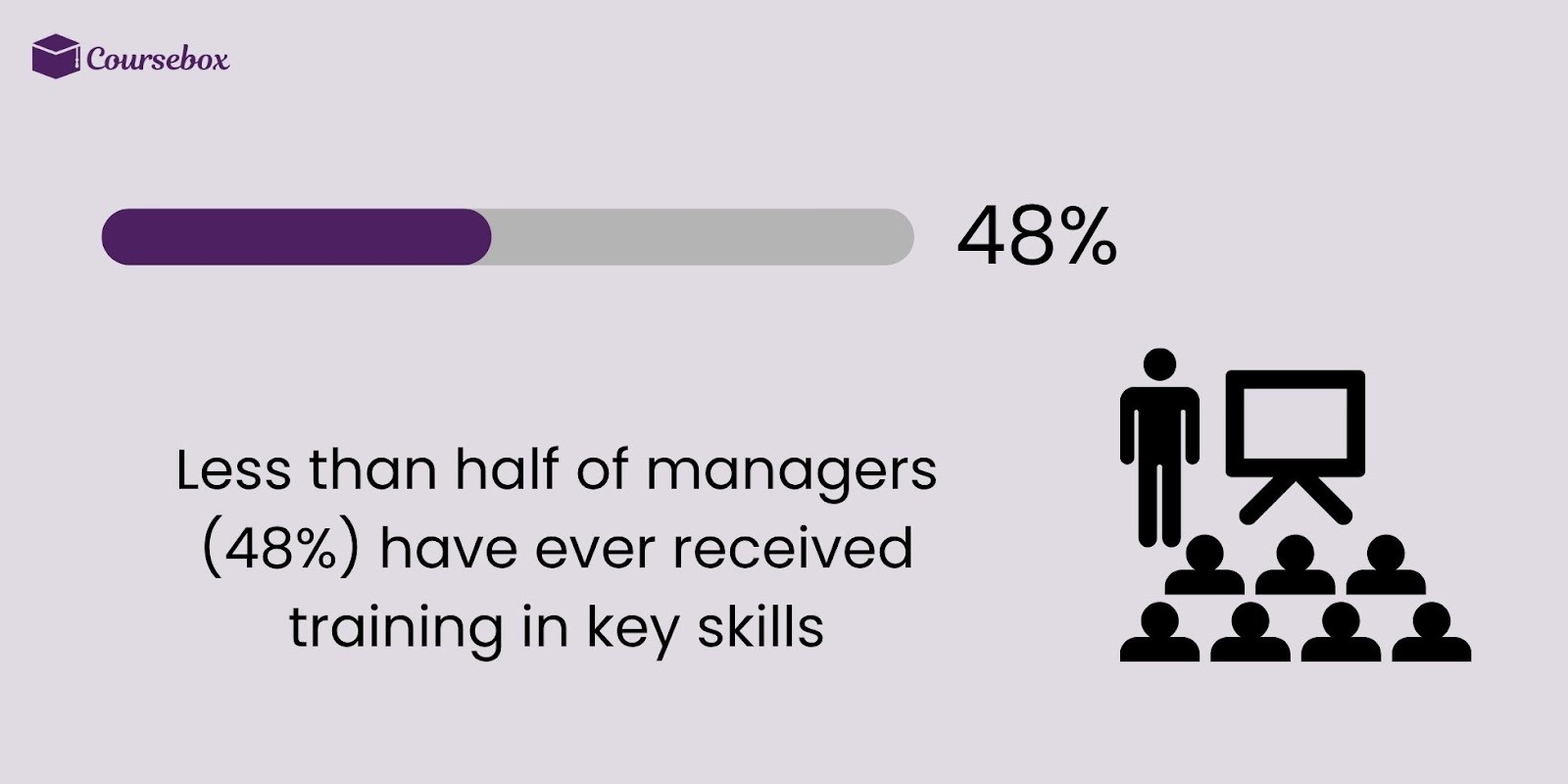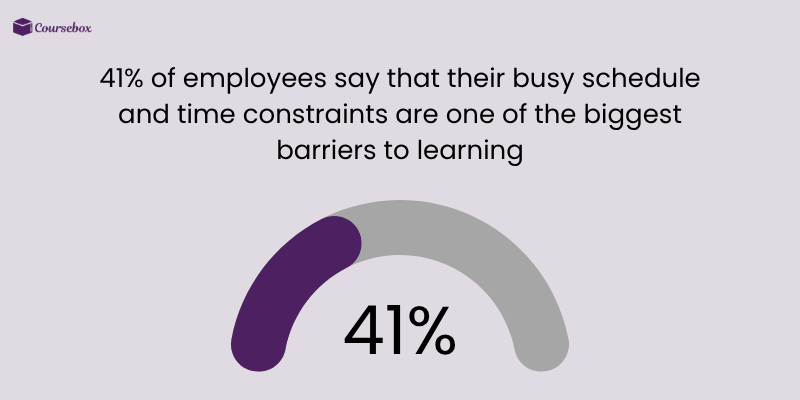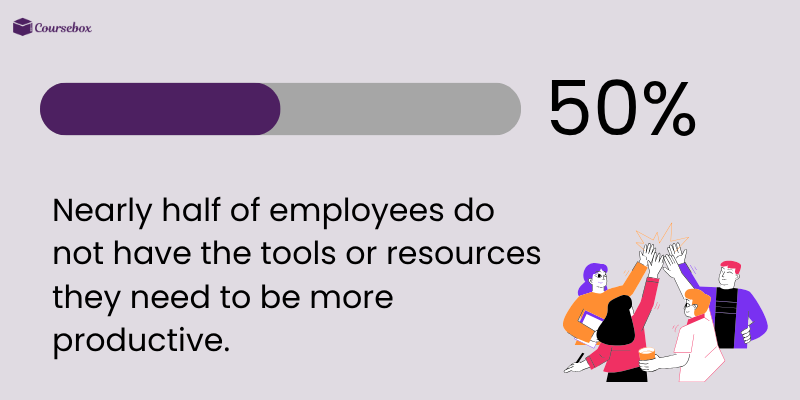8 HR Training Process Problems and How to Solve Them
Struggling with HR training process problems? Discover the common pitfalls that derail employee learning and how successful companies overcome them.
Struggling with HR training process problems? Discover the common pitfalls that derail employee learning and how successful companies overcome them.

HR managers worldwide are taking training more seriously than ever. Recent data shows that 66% have increased their Learning & Development budgets, and 77% plan to invest in life skills training within the next 12 months.
Yet despite these investments, many organizations still struggle with training process problems. Several challenges keep arising, regardless of the measures implemented. After in-depth research, we’ve identified these problems and found practical solutions.
In this article, we’ll share these solutions so you can overcome common HR training process problems and make your programs more successful.
Even the best-designed training plans often stumble in practice. HR teams face recurring hurdles that weaken the impact of learning programs and frustrate employees. These problems aren’t new, but what’s different now is that we have research, surveys, and HR insights.
Here’s what you need to know about common HR training process problems and how to solve them:

One frequent HR training process problem is weak leadership involvement. When executives or department heads don’t allocate proper resources, HR teams don’t have the necessary funds to build training programs.
This creates a ripple effect. Without leadership endorsement, training initiatives struggle to gain credibility across the organization. Moreover, studies show that less than half of managers (48%) don’t receive training in key skills.
That shows the employers and the employees how serious you are about it. Not just that. The problem is that when HR doesn’t understand a topic themselves, they are not capable enough to support training and reinforce with feedback.
Solution: To address this issue, HR should align training proposals with business objectives and present a clear ROI. This way, your managers understand why it’s important to invest in proper training sessions.
Gaining leadership approval early helps secure resources and ensures training becomes a recognized part of organizational strategy.
A limited budget typically means low quality, and that extends to HR training processes as well. Because of this, you may not be able to hire skilled trainers, purchase up-to-date resources, or conduct the number of sessions that your teams require.
What happens next? Your team doesn’t retain the learning, and as a result, the skills gap only grows worse over time.
Solution: One way to tackle budget constraints is to get creative with delivery. Instead of relying on costly in-person sessions, you can use blended learning. This combines short digital modules with peer-to-peer discussions.
Also, show the leadership how training increases sales, and they’d be more inclined to increase the L&D budget.

Spending weeks or months developing a training program only to see low engagement is every HR manager’s nightmare. However, this is a challenge most HR teams face.
The consequences of disengagement are significant. According to Gallup’s 2024 Workplace Report, only 31% of U.S. employees are engaged at work, the lowest level in over a decade.
The common assumption is that low engagement means the training itself is flawed. In reality, this is often not the case.
Engagement also drops when timing is off or the format doesn’t suit employees. For instance, scheduling training during high-stress periods can drain energy instead of boosting it, leaving employees frustrated rather than motivated.
Solution: Fixing engagement often starts with proper timing and format. Additionally, avoid scheduling training during peak workloads when employees are already stretched thin. Instead, align sessions with quieter periods or spread them out into flexible modules.
As for the training format, replace long slide decks with methods like interactive workshops or scenario-based exercises. This way, training feels relevant, less draining, and easier to absorb.

“I don’t have the time for training”.
You might have heard these exact words from your employees, and that isn’t an excuse but a reflection of how busy workplaces are. Employees are juggling tasks, deadlines, and unexpected responsibilities, leaving no time for training.
This problem is more widespread than most leaders realize. A recent article on Forbes revealed that 41% of employees cite their busy schedules and time constraints as one of the biggest barriers to learning.
Most employees hesitate to complete training programs at home because that’s the only time they get for their families and themselves. This results in knowledge gaps within teams, which eventually show up in reduced performance and collaboration issues.
Solution: Use microlearning modules that can easily fit into an employee’s workflow instead of demanding hours. Moreover, make these modules mobile-accessible with an LMS so employees can learn even while traveling.
One of the best LMSs you can find today is offered by Coursebox. It lets you generate interactive courses in minutes and also have chatbot tutors to answer any questions the learners might have.

The next one on our list of HR training process problems is inadequate onboarding. However, onboarding itself isn’t the problem, but the way HR handles training during onboarding often is. Too many teams still use outdated methods, like handling over a stack of policies or showing endless slide decks on the first day.
Instead of creating clarity, this leaves new hires overwhelmed and confused. The real issue is that the process lacks structure. Without a consistent training framework, HR ends up repeating the same instructions over and over.
Studies show that strong onboarding improves new hire retention by 82%. That’s huge for any company.
Solution: HR teams can fix this by creating standardized onboarding training checklists that clearly outline what new hires should learn in their first week, month, and quarter. Digital platforms make this even easier, as they ensure no step is missed and everything stays up to date.

Many HR teams run training sessions not knowing whether the training is working. They track things like “how many people attended” or “did they finish,” but not the deeper effects like whether employees changed behavior or improved performance.
Without these metrics, you cannot tell what works or what needs fixing. This lack of meaningful measurement creates blind spots.
For instance, a McKinsey survey found that only about 50% of organizations collect participant feedback. Because of this, training efforts can be wasted on programs that look good on paper but don’t move the needle as intended.
Solution: You can use a combination of measurement types to make training more effective. This includes post-training assessments, on-the-job behavior checks, and business outcomes like speed or revenue.
Moreover, don’t just collect the metrics; review them regularly. If certain training isn’t improving the chosen outcomes, refine the format, content, or delivery method.

Training a remote or hybrid workforce brings unique difficulties.
When you don’t have the right learning tools, it’s hard to create consistent experiences across locations. Many companies don’t invest in proper learning management systems, which leaves HR stuck with free tools that lack tracking features.
This creates big gaps in training. Some employees receive coaching while others are left behind, which reduces performance and makes learning harder to measure. In fact, a survey of work-management tool usage found that nearly half of employees do not have the tools or resources they need to be more productive.
For HR, this means that developing effective training programs becomes a struggle, since they can’t track completion.
Solution: HR should adopt an LMS designed for hybrid setups. A good platform provides features like real-time analytics, easy mobile access, and built-in collaboration tools. This allows you to deliver training that matters.
It also gives you clear information and insights on what’s working, so you can improve programs and provide better support to the employees.
A few years ago, the World Economic Forum warned us that by 2025, half of the workforce would need upskilling, and we’re now living in this reality. Even then, many HR professionals are stuck on the same training programs from years ago.
For example, a sales team might be trained on last year’s software, only to find a new platform has already replaced it. The result? Wasted effort and training costs.
Every training program is built without future skills in mind, risking the waste of resources and leaving employees behind. Nevertheless, the real challenge here is foresight. HR teams don’t know which skills are in demand and which are now deemed obsolete.
This oversight has a direct impact on the employees as they struggle to adapt to new requirements.
Solution: To bridge skill gaps, run regular skills-gap scans and build a 6–12 month reskilling plan for priority roles. It’s also helpful to use job-mapping to link courses to expected future tasks.
Make sure you partner with subject experts to create career pathways. This helps you stay informed about the new skills your employees need to help the company grow.
Here are some ways you can prevent HR training process problems from happening in your company to keep the employees engaged.
Digital learning platforms simplify training management for HR teams. They provide real-time tracking of employee progress and generate instant reports.
With the help of these tools, you can allow employees to learn at their own pace, review modules as needed, and utilize various formats to suit their learning style. This includes videos, quizzes, and simulations.
A training program should never exist in isolation. If the skills employees are learning don’t match the company’s goals, money gets wasted. Aligning training with business objectives ensures that what employees learn is directly tied to the company’s growth and development.
For example, if a business wants to expand customer service, training should focus on communication and problem-solving skills.
Employees are the ones experiencing the training, so their feedback is critical. Asking for feedback shows respect for their time and effort, while also giving HR practical insight into what works and what doesn’t.
HR teams can easily gather it through quick feedback surveys, focus groups, or even casual check-ins. Acting on this input helps refine programs and keeps training relevant.
Training shouldn’t feel like a one-off event. When learning becomes an integral part of daily work, employees continue to grow.
HR teams can encourage this by rewarding individuals who share knowledge, establishing mentorship programs, and allocating staff time for skill development. A culture of learning not only motivates employees but also enhances employee retention.
Without measurement, it’s hard to know if training actually works. That’s why you need to set clear KPIs to see results.
The best metrics you can use are completion rates, knowledge retention, and improvements in job performance. Tracking these outcomes helps HR prove ROI to leadership, so they are more inclined to invest in training programs.
One HR training process problem that we didn’t directly discuss was creating content that employees actually enjoy. Organizations often lack this because it takes weeks to develop engaging training courses and ensure they work as intended.
But you don’t need to worry anymore. With Coursebox, you can create AI-generated training videos within minutes by using your existing documents. This means you won’t have to spend time building content and can help your employees grow.
Sign up for free today and experience how Coursebox makes training easier!
The best tools HR can use include LMS, an AI-powered course authoring tool, and platforms with built-in assessments. One platform that combines all these is Coursebox. It lets managers convert videos, documents, or even websites into interactive courses in minutes.
AI simplifies HR training by reducing repetitive tasks and creating personalized learning paths. It generates quizzes instantly, provides real-time feedback, and adapts content to learner performance. For HR, this means training can be delivered faster and is more relevant to each employee.
The best approach is integration. Instead of separating the two, HR can design programs that pair technical training with soft-skill practice. For example, pairing coding tasks with teamwork exercises.
To train remote employees, use virtual instructor-led sessions combined with interactive e-learning modules. You can also add features like discussion forums and virtual breakout rooms to help employees feel more connected and engaged.
